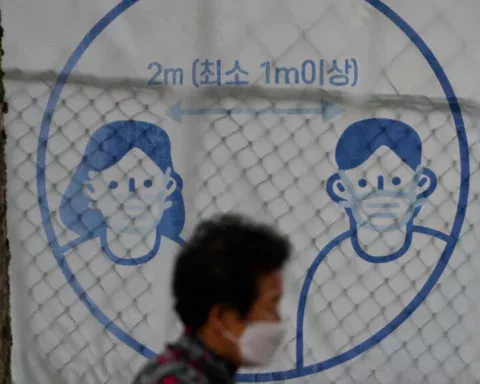Even before the pandemic they lacked access to basic financial services and knowledge that can help people to survive in difficult times.
ADB recently launched the Women’s Finance Exchange to promote awareness about how women can improve their finances and livelihoods. Christine Engstrom, who heads the financial institutions division of ADB’s private sector operations department, says the pandemic has been particularly trying for the region’s women. She explains how the Women’s Finance Exchange can help to ensure nobody is left behind as countries recover.
Why do women face extra barriers to obtaining basic financial services?
Just as in other industries, biases and conventional ways of banking may be blind to gender gaps. Despite progress, there is still a consistently large financing gap for women and women-owned small- and medium enterprises, estimated at $1.7 trillion globally.
Women also face barriers such as a lack of documentation of their business operations, as well as collateral, formal identification, or a network for female entrepreneurs to provide support. In addition, women often live long distances from financial institutions, and women’s ownership of mobile phones is more limited than that of men, restricting a key channel for the distribution of financial services.
Lending to women is also constrained by the risk aversion of banks (toward those people without traditional collateral) and a lack of gender-disaggregated data. Without data, financial institutions do not have a clear understanding of the potential market opportunity to provide financial products and services to women. As a consequence, they are not aware of the business case for serving low-income women. There are also cultural and religious factors. In some parts of Asia, women need the consent of a male family member to access formal financing.
What is the impact on their lives and on the region’s economies?
These barriers lead to missed opportunities to improve livelihoods. Women who are unable to obtain basic financial support experience greater difficulty in pulling themselves and their families out of poverty.
Women who do seek financing often rely on informal sources, such as loans from friends and family, or loan sharks. As a result, women are limited by the amount of financing available and often subjected to high interest rates that could lead to debilitating indebtedness. This means they miss out on opportunities to scale up their businesses through stable financial support, and to receive training from formal institutions.
Due to institutional gender bias in our systems and cultures, many women lack information and awareness of financing options. They also may not understand the role of financial institutions and the way they evaluate borrowers and businesses. Because of this, many women entrepreneurs are reluctant to seek financing at all.
Has the pandemic made matters worse? If so, how?
The pandemic has made matters worse. Retail and service sectors, which are often dominated by women, were hit hard by the pandemic, putting millions of women at risk of losing their jobs. Recent estimates by the International Labour Organization indicate that of the 55 million domestic workers globally at risk of losing their jobs and incomes due to lockdowns and lack of social protection, 37 million are women. This can be devastating for women, particularly those who are single mothers or who are critical contributors to family income needed to obtain food and shelter.
For women-owned businesses, the pandemic has meant no work, and this is often further compounded by the lack of any type of national level safety net. In addition, for countless women in economies of every size in Asia and the Pacific, the burden of caring for the family has become an even more onerous challenge. High rates of mental and emotional distress were also reported during the pandemic, with women reporting higher rates than men.
COVID-19 will continue to raise new barriers to women borrowers. Emerging evidence suggests that in lower and low-income countries, lost income will worsen poverty for informal workers and their families. According to a report by the United Nations and other contributing organizations, 155 million full-time jobs were lost in the first three months of 2020. This increased to 400 million in the second quarter, with lower and middle-income countries hardest hit.COVID-19 has made it more difficult for women to access financial solutions. Photo: ADB
What are the most efficient and feasible solutions, especially in the region’s poorer countries?
Gender lens investing, which uses gender analysis and tools such as gender equality scorecards, can be used by financial institutions to mitigate the bias towards women and their businesses by improving decision-making around investing in products and services that support women. Such support can include blended finance or funding from the public and private sectors at slightly lower interest rates.
Digital finance technologies can also be tapped to deliver more financial options for women. They can meaningfully alter supply-side economics by addressing “last mile” distribution and servicing issues through low cost, widespread points of physical access which are digitally enabled such as mobile phones and point of sale devices).
Additionally, digital finance technologies can significantly enhance access to credit through alternate sources of data (e.g., payment transactions, telco data) and analytics driving better customer profiling, credit risk assessment, and fraud detection. Business processes and service delivery models, for example, are primed for digital transformation since many financial institutions and women’s businesses have not yet digitized their models. Also, financial products can be tailored for women borrowers, and financial and digital literacy training can be provided.
ADB is launching the Women’s Finance Exchange. How will it help?
There is still a long way to go to increase women’s access to finance. That’s why ADB has set up the Women’s Finance Exchange. It will work with financial partners to expand gender-responsive financing in developing economies of Asia.
Through the Women’s Finance Exchange, ADB will partner with organizations such as the Center for Excellence in Financial Inclusion (CEFI). We will work with CEFI to help women become better entrepreneurs through online training programs on topics such as debt management, business planning, and e-commerce. An online platform will feature our clients and their achievements, and introduce new technologies that can help solve gender-responsive financing challenges.
Women’s Finance Exchange will conduct market scoping and needs assessments for financial technologies to help financial institutions expand their gender-responsive finance portfolios. It will provide IT assessments for gender lens financing topics, such as alternative credit scoring models which incorporate gender specific data. In Papua New Guinea, for example, we will work with MiBank to boost lending to women’s businesses and develop a digital product. By 2023, about $300,000 in new financing will be provided to at least 40 women’s businesses in Papua New Guinea.

What more needs to be done?
First, we need more gender-disaggregated data. Data can inform banks and financial institutions on best practices in designing products, programs, and strategies to meet the specific needs of women’s businesses. Data can identify, for instance, how the pandemic has affected women in different ways than men, and provide crucial guidance on actions which meet the real needs of women.
Second, if we want genuine change, we need to invest more in women. There are some inspiring and effective partnerships, such as Women Entrepreneurs Finance Initiative (We-Fi) and FinEquity, which are working to narrow the gender financing gap. But we can do much more.
ADB supports women entrepreneurs in many ways. We provide guarantees through our Microfinance Risk Participation and Guarantee Program to partner with financial institutions so they can lend to microfinance institutions that on-lend to micro-borrowers, mostly rural women. ADB also provides targeted long-term funding to women’s businesses through many financial institutions across Asia and the Pacific. Capacity building through grants from ADB boosts the capabilities of financial institutions and women borrowers through financial literacy and legal training and new product development.





